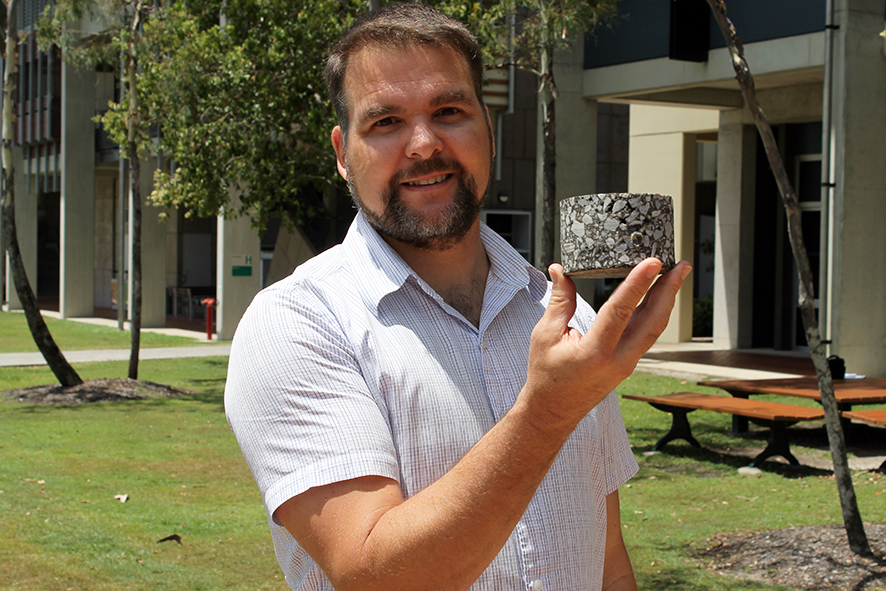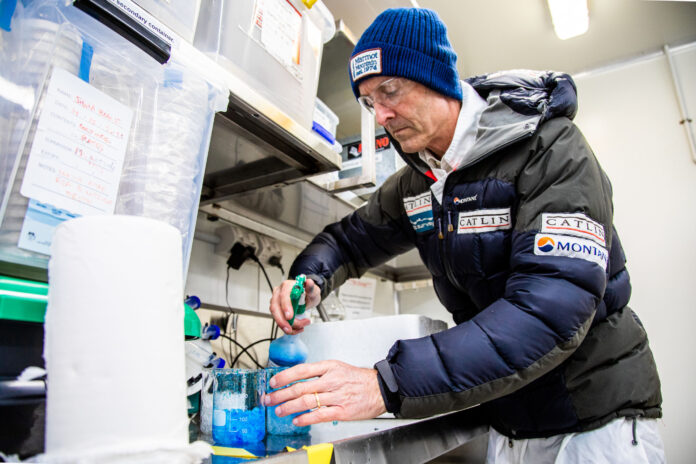A solution to “one of the last great polar logistical problems” may have been uncovered in a by University of the Sunshine Coast researchers.In a recent article published in the Journal of Cold Regions Engineering, the UniSC researchers said they believed they’d found a way to build aeroplane runways out of snow at the South Pole – using nothing more than coloured dye.It sounds simple enough, so why has this proved so difficult for polar scientists and engineers over the decades?
Dr Greg White said it was more than a matter of just shoving snow together.“Snow strength comes from sintering of the particles, which is partial melting leading to bonds on a microscopic scale,” he said.
“It’s like sugar granules bonding together over time if you leave them undisturbed in a jar.“At the South Pole it’s -30 degrees most of the year. Snow only sinters quickly enough to be helpful at about -10.”

It’s a complex problem. Past efforts to overcome it have included everything from heating the snow up to mixing it with sawdust to make miniature bricks.
But the theory behind using coloured dye to create a stronger snow is surprisingly simple.“The dye attracts sunlight because it’s darker, which increases the snow’s temperature from -30 to -10, which accelerates the sintering process,” Dr White said.“This means the snow gets stronger in a reasonable and practically viable time frame, rather than taking years to harden up.”

To test this idea, different concentrations of coloured dye were applied to manufactured snow packed into beakers.
The samples were then exposed to a lamp emitting the same light frequency as the sun over the course of several months, in a freezer simulating South Pole conditions.
Dr Adrian McCallum said the results backed up the concept.
At the end of the trial, the dye-coloured snow tested as warmer, denser and stronger.“If we went to Antarctica and sprayed this dye along a 1km x 100m wide section, then stood back and let the sun do its thing … I think it could work,” he said.“As long as it was done with an inert dye that didn’t cause any environmental harm, then I think it’s viable.“But we’d need to do a larger field trial to validate this. That’s the next step.”

A snow runway at the South Pole would give researchers based there access to equipment and supplies that the current facilities don’t allow.“They can only land ski-equipped Hercules aircraft at the pole, and they can only carry a limited amount of fuel.”
“But the Amundson-Scott Research Station relies on diesel to run the generators. They want to be able to land a normal aircraft with wheels.”Instead, fuel and other supplies are flown to the coastal airstrips of Antarctica, where the snow is warm enough to sinter, and then towed to the base via the South Pole traverse road.“It’s one of the last great polar logistical problems,” Dr McCallum said.

Dr White is an engineer and one of Australia’s leading experts in airport pavement, while Dr McCallum is a polar explorer and engineer specialising in snow and ice strength.
“Adrian is interested in snow. My work is focused on airport pavements,” Dr White said.
Dr McCallum added: “There are other folks out there who deal with snow roads and snow runways – but arguably you could say we are becoming global experts in our field.”
SUBSCRIBE here now for our FREE news feed, direct to your inbox daily.





